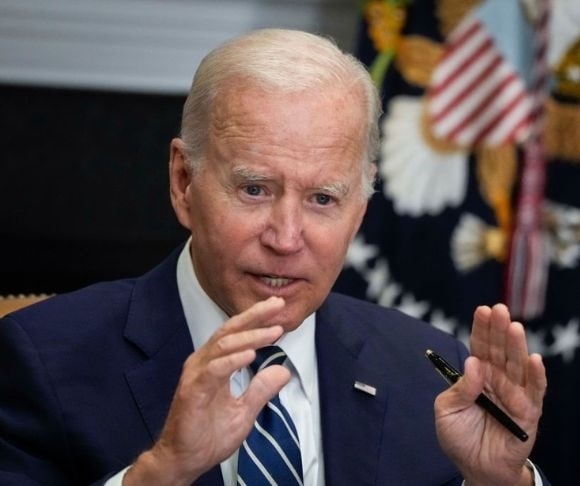President Trump inherited the problem of diminished critical minerals for weapons production from the Obama administration. However, Biden’s Defense Department assures Americans it is monitoring the situation. True to form, the Pentagon is in lockstep with the administration narrative blaming the mineral shortages on the Russian invasion of Ukraine. But the Pentagon and Congress were aware of – and, in all candor, doing very little about – the reduced availability of a secure and reliable supply of rare earth minerals and microelectronics for at least two decades. Biden’s failure to address his supply chain mess effectively at US ports has only made things worse – particularly for the Department of Defense (DOD).
“It’s really about making sure that the defense industrial base is strong, but it’s also looking hard at where some of our supply chain vulnerabilities are … such as dependency on critical materials whose supply is dominated by China,” explained the acting assistant secretary of defense for industrial base policy, Deborah Rosenblum, at a National Defense University (NDU) presentation, according to Defense News. The subject of a strong, robust industrial base has been at the top of the DOD’s worry list for twenty years. “With the invasion of Ukraine, there are certain materials that come out of both Russia and Ukraine that are critical to our munitions [where] the market has become disrupted, and it’s just not functioning,” Rosenblum spouted the Biden narrative, blaming others. She did not address why the US was in the position of being so dependent.
Rosenblum touted the administration’s initiatives by telling her NDU audience that part of the Ukraine $40 billion spending legislation included $600 million in Defense Production Act (DPA) funding. The DPA money shores up defense industrial base limitations to backfill Javelin anti-tank missiles and Stinger anti-aircraft missiles and increase production of critical rare earth minerals. These initiatives, while necessary, do little to address the problem not having production capacity or access to materials. Rosenblum failed to mention Biden’s intention to use the special DPA wartime powers to buy solar panels to push his green agenda, doing nothing for the defense industrial base. Management of the DPA falls in Rosenblum’s job jar.
And wait, aren’t most solar panel components made in China? When questioned about this, the White House press secretary scrambled to clarify that American solar panel production would not benefit China. However, “[t]hese actions do not apply to any materials imported from China,” press secretary Karine Jean-Pierre explained. If the defense objective is to ween America away from Chinese components and materials used in solar panels, using wartime programs to buy components and materials from China seems counterproductive. It’s a head-scratcher.

Karine Jean-Pierre (Photo by Alex Wong/Getty Images)
In early June, Rosenblum also spoke in Ft Worth, TX, at an event sponsored by the National Economic Council and the Texas A&M Engineering Experiment Station. “The last two years have revealed critical gaps in the US industrial base and an overreliance on foreign manufacturing. As such, supply chain resilience has become not just an economic priority — it’s not just about quality-of-life issues — it’s become a national security imperative,” she said.
But therein lies the real issue for DOD. “Gaps in the industrial base and an over-reliance on foreign manufacturing” have been a national security issue for some time and should not just now be considered an imperative. Yet the Biden administration has been running the Pentagon and in charge for 18 months. Still, he has not had the nominee for the permanent Assistant Secretary of Defense for Industrial Base Policy even considered by the Senate Armed Services Committee.
That’s why Rosenblum is the acting face for defense industrial base policy. Generally, positions within the Pentagon that have responsibilities important to a president and the administration are filled quickly, at least within six months. The absence of a Senate-confirmed assistant secretary may explain why there are so many awareness of problems and so few solutions.
The views expressed are those of the author and not of any other affiliation.




